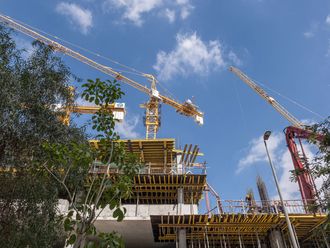
In the dynamic world that is construction, the one constant builders always expect is change. One factor that plays a role is the fluctuation in material costs, whether it’s as lumber, steel and other construction-related commodities.
These variations can send shockwaves through the entire construction process, influencing budgets, timelines, and the overall prospects of a project. The task to sustain stable pricing for these materials thus evolves into a challenge, as their values are linked to forces that require constant attention.
Lumber and steel are two main elements in the construction industry likely to fluctuate. The supply and demand dynamics for these materials are often related to global economic trends making it difficult to maintain stable pricing.
The challenge is not only to predict and respond to shifts, but also to navigate the uncertainties caused by supply chain disruptions that surpass national borders.
Impact on project feasibility
The effect of material cost fluctuations is a major impact on construction budgets. When prices rise unexpectedly, construction projects that were planned and budgeted face sudden financial difficulties. Developers find themselves in a dilemma whether to absorb the increased costs, re-negotiate contracts or revise the project scope to align with the available budget.
Large-scale projects with thin profit margins find it tough to absorb the sudden spike in material costs and lead to delays, cost overruns or even project desertion. This not only affects the construction company but subcontractors, suppliers, and the wider economy in general.
Supply chain disruptions
Fluctuations in material costs usually lead to disruptions in the supply chain. Take your pick from transportation bottlenecks, global events, natural disasters etc. Delays inevitably lead to additional costs for labor and equipment rental.
To avoid supply chain disruptions, construction professionals are adopting risk management strategies and diversifying their supplier base. This adds another layer of complexity to project planning and execution, because builders must balance between cost, quality and timelines.
Adapting to change
The construction industry has to adopt strategies to ease the impact of material cost fluctuations. This includes establishing flexible contracts that account for variable material prices, closely monitoring market trends, and building strong relationships with reliable suppliers.
Additionally, sustainable and innovative construction practices that reduce reliance on traditional materials can provide a level of protection against market instability.
Those who can effectively handle or reduce the impact of material cost changes will prove to be more successful in their projects, even in a constantly changing market…









